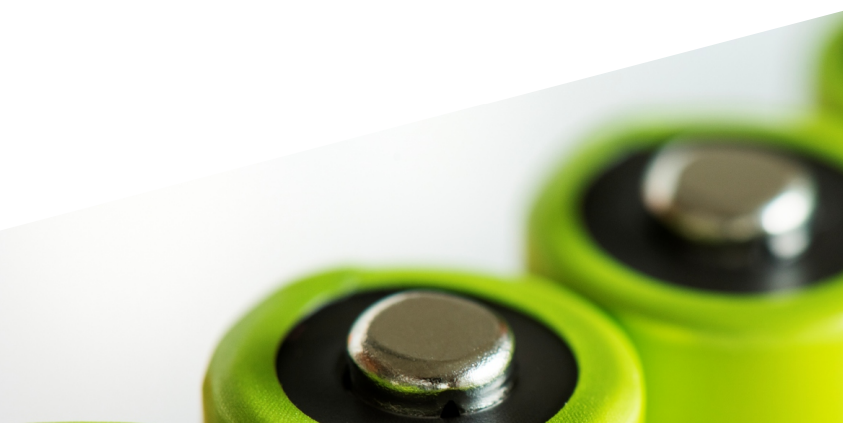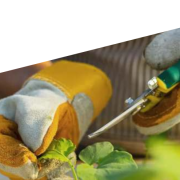Sustainability Versus Profitability: Lithium Iron Phosphate (LFP) Batteries in Indonesia’s Transition to Green Energy Amidst Nickel-based Trends
Indonesia, known for its vast nickel deposits, is poised to become a major player in the global battery industry. Nonetheless, a pivotal choice looms on the horizon —one that could lead the country down a path of sustainability or prosperity. As many scientists have advocated for a shift towards greener living, electric vehicles (EVs) are gaining traction as one of the solutions to a green lifestyle. Indonesia was distributing 81,525 units of EVs by 2023 (Ika, 2023), a significant increase from previous years. Meanwhile, the number of electric motorcycles alone surged 13-fold from 2020 to 2023 (Annur, 2023).
While often perceived as a solution, producing Li-ion batteries includes a protracted process that ironically relies on exploiting natural resources through mining. Nickel extraction, in particular, has devastated vast forest areas, raising concerns about accelerating EV adoption (Bhawono, 2021). This trend of EVs negatively impacts society, highlighting the need for an energy transition solution that reduces dependence on nickel-based battery production. Amidst the energy transition paradox, lithium ferrophosphate (LFP) technology holds promise as a greener alternative, mitigating the environmental concerns caused by nickel exploitation. Nevertheless, many challenges might arise in the process, mainly due to Indonesia’s nickel-focused economic policy. The dilemma between economic profitability versus ecological sustainability is predicted to emerge from the political and policy-level contestation.
Nickel: A Double-Edged Sword?
Without a doubt, nickel is a critical ingredient for lithium batteries that will power up electric vehicles. Transitioning to sustainable energy requires concerted efforts across sectors and governance levels, mainly concentrated on attaining a low-carbon and high-renewable integration society. Among various levels of life, the transportation sector is particularly noteworthy, as it accounts for more than 20% of global greenhouse gas emissions (Gil‐García et al., 2021). These findings are corroborated by research conducted in China, indicating that achieving full adoption of electric vehicles (EVs) can lead to energy conservation and a reduction in carbon emissions of up to 11% in urban regions (Yuan et al., 2021). However, the nickel potential in Indonesia lies beneath the soil, which forms the surface of a tropical forest landscape near bodies of water that serve as a source of life for the locals.
Three words: human rights, deforestation, and pollution. The nickel industry in Indonesia has been singled out for its adverse effects on the environment and communities, serving to advance an elitist energy transition agenda centred on nickel dependency. One such case is in Halmahera, Maluku, where PT Indonesia Weda Bay Industrial Park has been implicated as the perpetrator by the Climate Rights International (CRI) report in January 2024. Five steam power plant units the company used polluted the air, 5,331 hectares of tropical forest were lost, and 2.04 metric tons of greenhouse gases were released into the atmosphere (CRI, 2024). Conversely, the availability of clean water and marine resources —a fundamental aspect of human rights deserving protection— is almost non-existent (Aranditio, 2024).
This was merely one of the numerous harmful actions that were justified within President Jokowi’s plan to enhance nickel production downstream, aiming to capitalize on Indonesia’s significant resources. The idea did not come out of nowhere; according to figures from the Central Statistics Agency (BPS), Indonesia’s nickel exports surged from 91,408.6 tonnes in 2019 to 777,411.8 tonnes in 2022 (Ahdiat, 2023). Interestingly, the upward trend persists despite the government’s imposition of a ban on raw nickel ore exports in 2020, which was problematized by the European Union (EU). As the need for nickel worldwide has increased, Jokowi aims to emerge as a frontrunner in the EV sector. The government will focus on manufacturing lithium batteries by harnessing the country’s substantial nickel reserves, which is crucial in triggering the global energy transition.
Iron Versus Nickel? Why Should Indonesia Shift
This is where the paradox is (almost) solved; LFP has been proven to be more environmentally friendly than lithium-ion batteries (Wang & Sun, 2012). More or less, since LFP does not contain either cobalt or nickel, two metals notorious for environmentally damaging extraction methods. Through their research, llamas-Orozco et al. (2023) indicate that the widespread use of nickel batteries may increase emissions to 8.1 GtCO2eq, but switching to LFP batteries could cut emissions by about 1.5 GtCO2eq. The LFP battery emits less greenhouse gases than nickel-based types, with an intensity of 55 kgCO2eq/kWh. Continuing on that, the constituent materials utilized in LFP (lithium iron phosphate) batteries, such as iron, phosphate, and lithium, are not only abundant but also readily accessible on a global scale. This highlights the feasibility and also alleviates environmental and societal pressures associated with the extraction of rare materials, or in this case, nickel-based ones.
Aligning with the idea, Indonesia, which is rich in resources, possesses an abundance of iron and phosphate. Every year, 2.14 million metric tons of iron ore are extracted across provinces, notably in South Sulawesi, Jambi, and Maluku (Soedarsono et al., 2013). As for phosphate, the Indonesian Minerals Year Book 2018 found that Indonesia possesses a significant potential for phosphate, totalling roughly 23.33 million tons (Nurbaiti, 2023). Regarding resource availability, transitioning to LFP has never been a problem for the country.
Moreover, LFP batteries boast an extended lifespan compared to other batteries. With a potential longevity of 10 years or more, they relieve the need for frequent replacements and disposal of used batteries. The hazardous properties of battery components directly harm organisms, including humans. Around the world, only 5% of disposed batteries are recycled properly (BBC News Indonesia, 2022). While in Indonesia, the people of Kebasen in Central Java have seen firsthand that lead exposure from battery smelters could cause damaging health issues, pollute the rich soil, and contaminate the fresh air (Fauzi et al., 2022; Paddock, 2021).
Furthermore, looking at the financial feasibility of LFP, it is much cheaper than other alternatives (Wentker et al., 2019). An LFP battery typically costs less, averaging around $70-80 per kilowatt-hour (kWh), approximately 20-30% lower than the price range of NMC batteries (Shafa, 2024). Talking about accessibility, all of its metals and minerals can be obtained from most parts of the world, especially for North American companies, which are often struggling to maintain their global supply chain (Popien et al., 2023). As a middle-income country, Indonesia and its population might prefer LFP over lithium-ion ones if cheaper.
Iron Wins, Would Indonesia Follow?
Even though the data suggests that LFP batteries are more sustainable than nickel-based ones, Indonesia might be reluctant to adopt this pathway. President Joko Widodo, in 2020, implemented a ban on nickel ore while EVs were rising as a global trend (Gupta, 2024). This was accomplished as a part of his grand strategy of downstream, driving foreign investors to build their manufacturing facilities inside Indonesia (Pandyaswargo et al., 2021).
One of the recent partnerships with South Korean companies also reflected the commitment to focus on nickel by constructing lithium-ion battery plants in Karawang (Maulia, 2021). This strategic approach involves the establishment of supplementary domestic smelting facilities to promote the onshore processing of Class 2 nickel. Additionally, the establishment of the Indonesia Battery Corporation (IBC) also demonstrates President Joko Widodo’s consistent ambition. At the same time, in many international conferences, especially the G20, the nation has repeatedly promised a move towards sustainable energy transition.
Indonesia stands at a crossroads between economic profitability and environmental conservation. Even though using nickel can be profitable financially for the developing country, one must remember its commitment to saving the earth. The emergence of LFP technology offers a solution, providing more eco-friendly alternative to traditional lithium-ion batteries. By adopting LFP, Indonesia can navigate the energy transition paradox and move towards a more sustainable future. Nonetheless, this can only be fully accomplished if President Joko Widodo and his successor ease down his developmental goals for sustainable development.
Referensi
Ahdiat, A. (2023, June 7). Ekspor Nikel Indonesia Meroket pada 2022, Rekor Tertinggi Sedekade. Katadata. https://databoks.katadata.co.id/datapublish/2023/07/06/ekspor-nikel-indonesia-meroket-pada-2022-rekor-tertinggi-sedekade
Annur, C. M. (2023, September 15). Riset Deloitte dan Foundry: Penggunaan Motor Listrik di Indonesia Naik 13 Kali Lipat dalam Dua Tahun. Katadata. https://databoks.katadata.co.id/datapublish/2023/09/15/riset-deloitte-dan-foundry-penggunaan-motor-listrik-di-indonesia-naik-13-kali-lipat-dalam-dua-tahun
Aranditio, S. (2024, January 17). Damaging the Environment, Downstreaming of the Nickel Industry Needs to be Evaluated. kompas.id. https://www.kompas.id/baca/english/2024/01/17/en-merusak-lingkungan-hilirisasi-industri-nikel-perlu-dievaluasi
BBC News Indonesia. (2022, February 23). Mobil listrik dan baterai litium: Bagaimana upaya mendaur ulang baterai yang kebanyakan akan menjadi sampah? BBC News Indonesia. https://www.bbc.com/indonesia/vert-fut-60474372
Bhawono, A. (2021). Pertambangan Nikel Biang Hilangnya 16 Ribu Ha Hutan di Malut. betahita.id. https://betahita.id/news/detail/7934/pertambangan-nikel-biang-hilangnya-16-ribu-ha-hutan-di-malut.html?v=1664564533
Climate Rights International. (2024, January 17). Indonesia: Huge Nickel project driving climate, rights, environmental harms. https://cri.org/indonesia-huge-nickel-project-driving-climate-rights-environmental-harms/
Fauzi, R., Rita, R., & Masitoh, S. (2022). Management of lead (Pb) waste post-closing of used battery smelter. Jurnal Litbang Industri, 12(2), 89. https://doi.org/10.24960/jli.v12i2.7628.89-96
Gil‐García, I. C., García-Cáscales, M. S., Dagher, H. J., & Molina‐García, Á. (2021). Electric Vehicle and Renewable Energy Sources: Motor Fusion in the Energy Transition from a Multi-Indicator Perspective. Sustainability, 13(6), 3430. https://doi.org/10.3390/su13063430
Gupta, K. (2024, January 21). Indonesia doubles down on nickel export bans and downstreaming | East Asia Forum. East Asia Forum. https://eastasiaforum.org/2023/12/07/indonesia-doubles-down-on-nickel-export-bans-and-downstreaming/
Ika, A. (2023, June 5). Jumlah Penggunaan Kendaraan Listrik di Indonesia Sudah 63.105 Unit Halaman all – Kompas.com. KOMPAS.com. https://money.kompas.com/read/2023/06/05/200000526/jumlah-penggunaan-kendaraan-listrik-di-indonesia-sudah-63.105-unit?page=all
Llamas-Orozco, J. A., Meng, F., Walker, G. S., Abdul-Manan, A. F., MacLean, H. L., Posen, I. D., & McKechnie, J. (2023). Estimating the environmental impacts of global lithium-ion battery supply chain: A temporal, geographical, and technological perspective. PNAS Nexus, 2(11). https://doi.org/10.1093/pnasnexus/pgad361
Maulia, E. (2021, September 15). Hyundai and LG start building $1.1bn EV battery plant in Indonesia. Nikkei Asia. https://asia.nikkei.com/Business/Technology/Hyundai-and-LG-start-building-1.1bn-EV-battery-plant-in-Indonesia
Nurbaiti, I. (2023, July 10). Fosfat, Mineral Industri untuk Pupuk Hingga Kendaraan Listrik. Bisnis Indonesia. https://bisnisindonesia.id/article/fosfat-mineral-industri-untuk-pupuk-hingga-kendaraan-listrik
Paddock, R. C. (2021, May 3). The toxic toll of Indonesia’s battery recyclers. Science. https://www.nationalgeographic.com/science/article/indonesia-s-toxic-toll
Pandyaswargo, A. H., Wibowo, A. D., Maghfiroh, M. F. N., Rezqita, A., & Onoda, H. (2021). The Emerging Electric Vehicle and Battery Industry in Indonesia: Actions around the Nickel Ore Export Ban and a SWOT Analysis. Batteries, 7(4), 80. https://doi.org/10.3390/batteries7040080
Popien, J., Husmann, J., Barke, A., Thies, C., Cerdas, F., Herrmann, C., & Spengler, T. (2023). Comparison of lithium-ion battery supply chains – a life cycle sustainability assessment. Procedia CIRP, 116, 131–136. https://doi.org/10.1016/j.procir.2023.02.023
Shafa, J. (2024). Bahlil denies nickel being less popular than LFP batteries. Jakarta Globe. https://jakartaglobe.id/business/bahlil-denies-nickel-being-less-popular-than-lfp-batteries
Soedarsono, J. W., Kawigraha, A., Sulamet-Ariobimo, R. D., Johansyah, D., Kusuma, G. D., Suprayogi, S., Yosi, A., Saputro, N. L., Sidiq, A., Erwin, E., & Natanael, D. (2013). Potential Indonesia ores as raw material for producing iron nugget. Advanced Materials Research, 652–654, 2529–2533. https://doi.org/10.4028/www.scientific.net/amr.652-654.2529
Wang, J., & Sun, X. (2012). Understanding and recent development of carbon coating on LiFePO4cathode materials for lithium-ion batteries. Energy and Environmental Science, 5(1), 5163–5185. https://doi.org/10.1039/c1ee01263k
Wentker, M., Greenwood, M., & Leker, J. (2019, February 5). A Bottom-Up Approach to Lithium-Ion Battery Cost Modeling with a Focus on Cathode Active Materials. Energies. https://doi.org/10.3390/en12030504
Yuan, M., Thellufsen, J. Z., Lund, H., & Liang, Y. (2021). The electrification of transportation in energy transition. Energy, 236, 121564. https://doi.org/10.1016/j.energy.2021.121564
.










Leave a Reply
Want to join the discussion?Feel free to contribute!